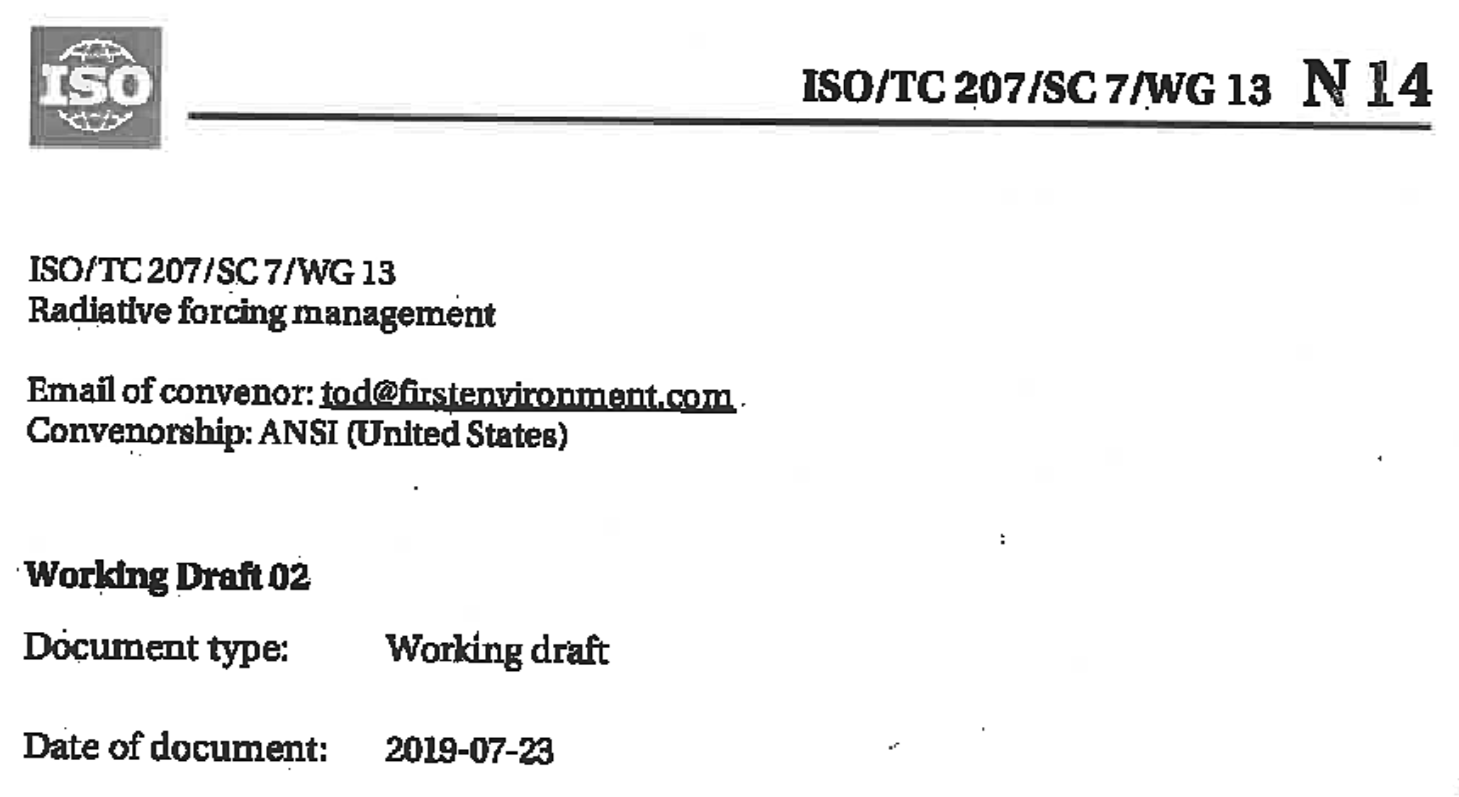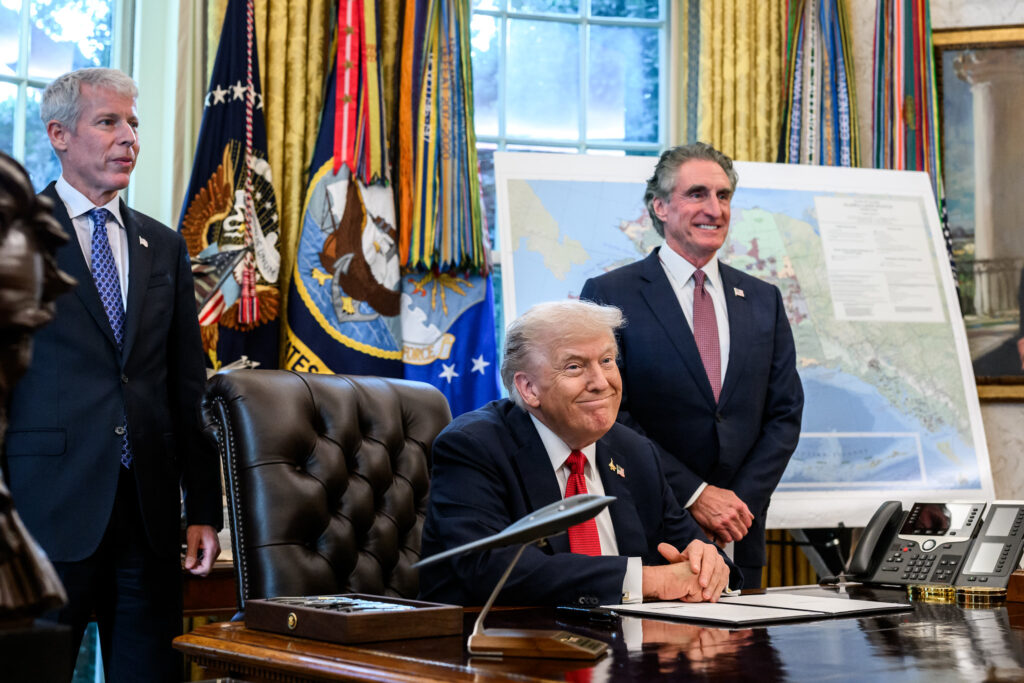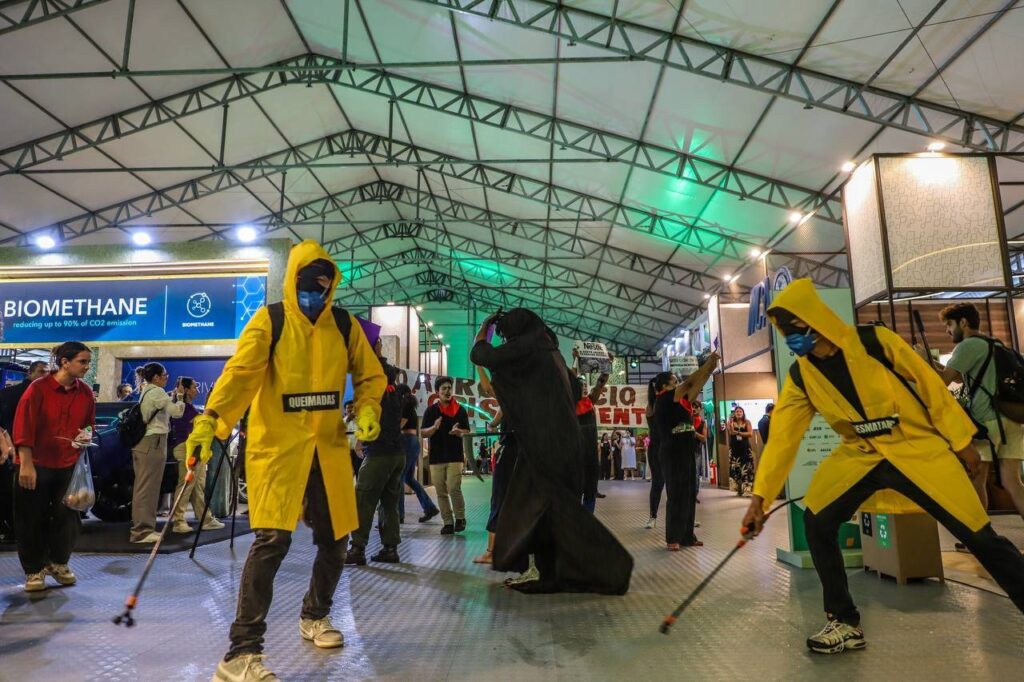In August, the French news service AFP revealed that the International Organization for Standardization (ISO) has been drafting new climate action guidelines for businesses that raise concerns about promoting geoengineering as a climate solution.
The ISO is an industry-driven non-governmental organization that sets international standards for products, services, and systems, giving it a powerful voice in the global business community.
With these draft ISO guidelines, which DeSmog has obtained, the ISO appears poised to provide voluntary and market-based standards to address climate change that differ in a key way from the UN Framework Convention on Climate Change and the Paris Climate Agreement. Instead of focusing on limiting global temperature rise, these guidelines argue for using radiative forcing, or the total excess heat warming Earth’s atmosphere, as the metric.
Radiative forcing is an established concept in climate science. MIT News describes it as “a direct measure of the amount that the Earth’s energy budget is out of balance.” Essentially, radiative forcing measures global warming by calculating how much more energy (or heat) the Earth is absorbing than reflecting. An obvious way to decrease radiative forcing, or even get to cooling, is solar geoengineering, which typically proposes injecting sunlight-reflecting particles into the atmosphere.
From the working draft on radiative forcing managment from the International Organization for Standardization (ISO).
After the AFP‘s story ran, the ISO released a statement saying that the guidelines were a work in progress and that the draft document “doesn’t contain recommendations for how organizations could alter radiative forcing.”
Hello, we take this opportunity to point out that this standard is at its earliest stages. The Working Group voted unanimously that SRM is completely out of scope. Working Group meetings are currently taking place in California and we are happy to share updates in the coming days
— ISO (@isostandards) August 28, 2019
The statement added, “The technical committee was keen to highlight that geoengineering techniques such as Solar Radiation Management [SRM] and Earth Radiation Management [ERM] are out of scope of the document.”
However, both geoengineering terms appeared in the draft.
From a draft copy of new guidelines on climate change from the International Organization for Standardization (ISO).
“The ISO may claim that SRM and ERM are out of scope of the standard, but they were clearly referenced in this draft. The ISO has made no analysis of the draft’s standard’s deeply technical provisions available to the public, or those outside the technical committee meetings, despite their potentially massive impact,“ Gita Parihar, independent environmental lawyer and former legal head for Friends of the Earth England, Wales & Northern Ireland, told DeSmog via email.
“The ISO is a commercial body, with very limited transparency in its working process. As such it is a wholly inappropriate forum for the discussion of highly controversial matters like geoengineering, ERM, SRM and their risks and consequences. This should be left to international legal frameworks like the Convention on Biodiversity where they can be discussed in their full public policy context with wide-ranging input and democractic oversight,” Parihar added.
Cost-Effective Options
ISO‘s draft document does not recommend specific solutions for managing radiative forcing. However, the language and scenarios used in the document certainly indicate geoengineering as a likely option.
The AFP quoted Janos Pasztor, executive director of the Carnegie Climate Governance Initiative and a former UN deputy secretary general for climate change, on one of the main appeals of geoengineering technologies like solar radiation management.
“It’s dangerously cheap,” Pasztor explained. “Peanuts.” DeSmog has previously noted that cost is one of the main appeals of solar radiation management.
The draft document specifically notes that the goal is to identify projects and actions that can impact radiative forcing “in the most cost-effective manner.” Solar geoengineering is one of the few proposed ways of addressing climate change that is considered cheap.
Additionally the draft document discusses “extending the range of mitigation options available to meet an entity’s climate targets and obligations.” Later, the document specifically mentions solar radiation management and earth radiation management, leading to questions of whether these approaches are within the “range of mitigation options” being considered by the ISO.
‘High-Risk Zones’
One focus of the draft ISO document is the concept of “high-risk zones,” which it describes as “regions facing extreme risks from climate change by or before 2030.” Regions, such as “part of the western US,” which is used as an example at risk of “temperature spikes” and “mean temperatures far in excess of GMT [global mean temperature].”
The section on ‘”high-risk zones” in the draft copy of new guidelines on climate change from the International Organization for Standardization (ISO).
As the ISO states, the document does not recommend any specific solutions for how to handle these high-risk zones, but the examples the organization cites quickly narrow down the list of possible options.
If the goal is to lower temperature in specific geographical locations like the western U.S. by 2030, solar geoengineering again becomes pretty much the only feasible proposal.
Coincidentally, Harvard is planning the first experiment in solar geoengineering over New Mexico at some point in the near future.
Support for Geoengineering Is Growing
Geoengineering, and specifically solar radiation management, certainly offers an appealing quick fix to global warming due to its low cost and promise for enabling business-as-usual activities. And it has many high-profile backers including Harvard researchers funded by Bill Gates. However, solar geoengineering also has many potentially catastrophic risks that come with it.
Many have discussed the need for an oversight agency to monitor geoengineering as the risks will only be amplified if various countries around the world independently implement different geoengineering technologies. While the ISO does set international standards, they are voluntary and non-binding for businesses, which has numerous drawbacks as a potential body for governing solar radiation management.
The issues raised by the ISO‘s draft guidelines appear to support a growing movement to sell solar radiation management as the only viable method of addressing global warming, but as DeSmog has pointed out many times before, decarbonizing the economy is the guaranteed solution to the bigger problem.
Main image: Sunset Credit: Hans Braxmeier, Pixabay
Subscribe to our newsletter
Stay up to date with DeSmog news and alerts









